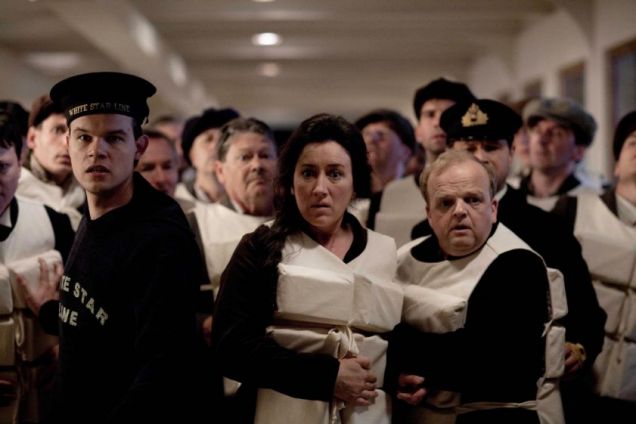By John Welshman
The latest news for period drama fans is that Julian Fellowes, creator and writer of Downton Abbey, has created a four-part ITV mini-series commemorating the centenary of the Titanic sinking. Publicity indicates that ‘Titanic’ will feature a mix of real and fictional characters. However, what many viewers may not realise is that there was a real Fellowes on board the ship in 1912. But rather than being an ancestor of the popular writer, Alfred J. Fellowes was a humble crew member and one of the estimated 1,514 people to perish in the maritime disaster.
Alfred Fellowes was part of the ‘victualing crew’: his official position was Assistant Boots Steward in First Class, and he received monthly wages of only £3 15s. Born in Liverpool, Fellowes was 29 years old, single, and he joined the Titanic at Belfast on 1 April 1912. Signing on again, at Southampton, on 4 April, he gave his address as 51 Bridge Road. His previous ship had been the Titanic’s sister ship, the Olympic.
Like many other crew members, Alfred Fellowes died in the sinking, and his body was retrieved by the steamer the Mackay-Bennett. The body (number 138) was described as being ‘male, estimated age 30, hair and moustache, black’. Fellowes was found wearing a green overcoat, blue trousers, grey coat, his Steward’s white jacket, black boots, and socks. He wore a gold ring, and had keys and scissors in his pockets. Fellowes was buried at Fairview Lawn Cemetery, Halifax, Nova Scotia, on 6 May 1912.
There were eight other Boots Stewards on the Titanic — Sydney Stebbings, William Rattenbury, Cecil Jackson, and John Scott in First Class, and Henry Bulley, Joseph Chapman, Edward Guy, and William Perrin in Second. Like Fellowes, many had worked previously on the Olympic, and like him, they typically gave addresses in Southampton when they signed on. Of these eight, only two survived – John Scott and Joseph Chapman, and of those who died Fellowes was the only one whose body was recovered. In fact, very little is known about any of them, usually only their name, where they were from, the address that they gave when they signed on at Southampton, and the level of wages that they received.
The Boots Stewards offer an entrée into the world of the Titanic’s large ‘Victualing Department’. It numbered 421 people in all, of whom 322 were Stewards. Perhaps slightly surprisingly, there were only 23 women — 20 Stewardesses, 2 cashiers, and 1 matron. But what is amazing is the number and diversity of the different occupations — scullions, lift boys, clerks, vegetable cooks, bakers, bell boys, kitchen porters, chefs, cooks, Turkish Bath Attendants, postal clerks, pantrymen, butchers, storekeepers, confectioners, stenographers, barbers and so on. The two telegraphists, or wireless operators, Jack Phillips and Harold Bride, employed by Marconi, were officially part of the victualing department. And apparent too is the diversity of occupations even within a single occupation such as Steward.



